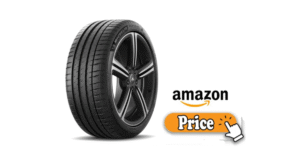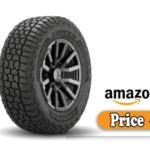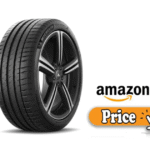Michelin is a name synonymous with high-performance, durability, and innovation in the tire industry. From Formula 1 tracks to suburban driveways, Michelin tires have long been a symbol of quality.
But one question lingers for many drivers: Where are Michelin tires made? In this in-depth guide, we’ll dive into the manufacturing story behind Michelin, examining where its tires are produced, how quality is maintained across global facilities, and what that means for you as a driver.
You’ll also learn what makes Michelin stand out, what areas could improve, and whether these tires are worth the premium price tag.
What I Like About Michelin Tires
Michelin doesn’t just sell tires; it delivers performance, safety, and trust. Here’s what stands out to me:
1. Global Quality Standards
No matter where a Michelin tire is made, be it in South Carolina, France, or Thailand, the quality control is stringent. Michelin uses a global manufacturing blueprint, meaning a tire made in the U.S. is held to the same standard as one made in Germany.
2. Industry-Leading Innovation
Michelin invests heavily in R,&D over $700 million per y, year to ensure cutting-edge tread designs, durable rubber compounds, and sustainable manufacturing practices. Their proprietary EverGrip and Michelin Total Performance technologies set industry benchmarks.
3. Quiet, Comfortable Ride
Across touring, all-season, and performance tires, Michelin tires often stand out for their low road noise, smooth ride, and superior handling comfort.
4. Excellent Wet and Dry Grip
Michelin’s tires offer consistently top-tier performance in dry and wet conditions. Whether you’re driving on sun-scorched highways or rainy city streets, Michelin ensures reliable traction and responsive braking.
5. Longevity and Mileage Warranties
Michelin tires are known to outlast competitors, with mileage warranties that go as high as 90,000 miles. Their treadwear is not just about numbers; it’s about maintaining consistent performance over time.
What Could Be Better
Despite its excellence, Michelin isn’t perfect. Here are a few drawbacks to consider:
1. Price
Let’s face it, Michelin tires are expensive. You’ll typically pay 20–40% more than mid-tier brands. For some drivers, the performance justifies the cost, but for budget-conscious buyers, it can be a tough pill to swallow.
2. Limited Off-Road Options
While Michelin excels in touring and performance categories, their off-road lineup is relatively slim. Drivers with heavy off-roading needs might prefer brands like BFGoodrich (ironically owned by Michelin) or Toyo.
3. Availability of Specific Models
Not all Michelin models are easy to find everywhere. Some ultra-high-performance or niche tires may have longer shipping times or limited dealership inventory in certain regions. 👉🏿👉🏻 Check the Latest Price and Offer at Amazon 👈🏻👈🏿
👉🏿👉🏻 Check the Latest Price and Offer at Amazon 👈🏻👈🏿
My Personal Experience with Michelin Tires
Over the years, I’ve used Michelin on several vehicles, from sedans and SUVs to a performance coupe. My standouts include:
- Michelin Defender T+H (on a Toyota Camry):
- Treadwear: Outstanding. Lasted well beyond 80,000 miles.
- Ride Comfort: Exceptionally smooth and quiet.
- Fuel Efficiency: Helped improve MPG by ~1.5–2 MPG.
- Michelin Pilot Sport 4S (on a BMW 330i):
- Grip: Unreal handled aggressive cornering with ease.
- Wet Handling: Confidence-inspiring, even in torrential rain.
- Drawback: Pricey and softer tread wears a bit faster, but worth every penny for spirited driving.
In both cases, the tires exceeded expectations, with Michelin living up to its reputation.
Design Philosophy
Michelin isn’t just manufacturing tires; they’re crafting a complete driving experience. Here’s what’s behind the curtain:
1. EverGrip Technology
This unique tread design evolves as the tire wears, revealing new grooves to maintain wet traction over time.
2. Michelin Total Performance
Rather than excelling in just one category, Michelin balances safety, longevity, fuel efficiency, and comfort across its tire lineup.
3. Acoustic Comfort
Some models like the Primacy MXM4 and Pilot Sport EV come with acoustic dampening foam to reduce in-cabin road noise, a feature usually reserved for luxury vehicles.
Performance Overview
Let’s break down how Michelin tires perform in real-world and tested conditions:
| Category | Rating (Out of 10) | Notes |
| Dry Traction | 9.5 | Consistently strong grip in all ranges |
| Wet Traction | 9.3 | Excellent hydroplaning resistance |
| Snow/Ice (All-Season) | 7.5 | Decent, but winter tires are still necessary for harsh climates |
| Comfort & Quietness | 9.7 | Class-leading ride quality |
| Tread Life | 9.0 | Long-lasting with even wear |
| Fuel Efficiency | 8.5 | Low rolling resistance in eco-friendly models |
Build Quality
Michelin is obsessive about consistency and durability. Here’s what you get under the rubber:
1. Premium Materials
Michelin uses advanced silica-based rubber compounds that resist heat, promote even wear, and maintain pliability in colder temps.
2. Reinforced Sidewalls
Many Michelin tires feature toughened sidewalls, especially in run-flat or performance models, offering added durability and safety during emergencies.
3. Global Quality Control
Now to the big question: Where are Michelin tires made?
Where Are Michelin Tires Made?
Michelin operates over 70 manufacturing facilities in 17 countries, including:
1. United States
- Plants: South Carolina (Greenville, Lexington), Alabama (Dothan), Indiana (Fort Wayne)
- What’s Made Here: Passenger car tires, truck tires, performance tires
- Fun Fact: The Greenville plant is Michelin’s North American HQ
2. France (Headquarters)
- What’s Made Here: High-end touring tires, truck and bus tires, specialty products
- Heritage: Michelin was founded in Clermont-Ferrand, France, in 1889
3. Spain and Italy
- Focused on European-spec tires, often found on imported vehicles or sold across EU markets.
4. Thailand and Vietnam
- What’s Made Here: Economy passenger tires, SUV tires
- Note: Tires made here follow the same standards as U.S./EU plants
5. China
- What’s Made Here: Regional models and certain economic lines
- Michelin operates under strict global guidelines, so quality isn’t compromised.
6. Canada, Brazil, Germany, and the UK
- Specialized plants produce unique tires for regional markets, including winter tires and commercial use.
Important: Michelin does not cut corners based on factory location. A Pilot Sport 4S made in South Carolina will perform identically to one made in Germany they follow the same specifications and testing protocols.
Read More: Where Are Cooper Tires Made
Alternative Options to Michelin Tires
If Michelin feels a bit out of your budget or you’re looking for something more specialized, here are strong alternatives:
| Brand | Tire Model | Strengths | Weaknesses |
| Continental | ExtremeContact DWS06 | Excellent balance of grip & comfort | Slightly noisier |
| Bridgestone | Turanza QuietTrack | Premium ride quality | High price tag |
| Pirelli | Cinturato P7 | Fuel efficiency, sporty feel | Treadwear could be better |
| Goodyear | Assurance WeatherReady | All-weather versatility | Pricier than mid-range competitors |
| Hankook | Ventus V2 Concept2 | Affordable UHP option | Slightly shorter lifespan |
Final Thought:
After exploring performance, design, and manufacturing, here’s the bottom line:
Michelin tires aren’t just “made,” they’re engineered with precision, passion, and purpose. Regardless of where they’re manufactured, Michelin ensures each tire upholds its legacy of premium performance and safety.
If you value long-lasting quality, confidence in all weather, and one of the quietest, smoothest rides money can buy, Michelin tires are worth every cent. While there are cheaper alternatives, few match the blend of innovation and peace of mind Michelin offers.
So next time someone asks, “Where are Michelin tires made?”, you can confidently answer: All over the world but always with the same commitment to excellence.
FAQs: Where Are Michelin Tires Made | My Honest Review
Q: Where are Michelin tires made?
A: Michelin manufactures tires in the U.S., France, Germany, Thailand, China, and several other countries. All plants follow strict quality control processes.
Q: Are Michelin tires good?
A: Yes, Michelin is considered one of the best tire brands in the world, offering excellent performance, longevity, and comfort.
Q: Are Michelin tires worth the price?
A: For many drivers. While they’re more expensive than average, the lifespan and performance can justify the cost.
Q: Do Michelin tires come with a warranty?
A: Yes, most Michelin tires come with treadwear warranties ranging from 40,000 to 90,000 miles, plus a limited manufacturer’s warranty.
Q: Are tires made in Thailand or China of lower quality?
A: Not with Michelin. Regardless of where the tire is made, Michelin holds all plants to identical manufacturing and quality standards.
Q: What Michelin tire is best for all-season driving?
A: The Michelin Defender2 and Primacy Tour A/S are among the top-rated all-season models for long tread life and comfort.
Q: Is there a difference between Michelin made in the U.S. vs. Europe?
A: No significant difference. Michelin’s global manufacturing strategy ensures consistency across all regions.


